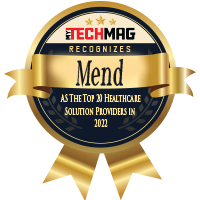For supporting a wide variety of business relationships between healthcare providers, while focusing on the common goals of improved patient care, efficient use of HIE technology has become a necessary business tool and a wise investment. If you, too, are looking to get started with a Health Information Exchange, there are some important steps to follow, but let us first discuss some basics.
Types of Health Information Exchange
Federated
It is a decentralized information exchange in which each participating organization retains control of their healthcare information and responds to queries when information is requested.
Centralized
It emphasizes full control over data sharing through a centralized repository. Information is first collected from participating organizations, and then it is stored in a centralized place to provide access.
Hybrid or Blended
It combines the two architecture types used to achieve the actual exchange of clinical data. One information is stored centrally, and the other information is accessed by sending queries to participating organizations.
Federal Rules and Regulations Involved
Many federal laws and regulations are governing the exchange of Protected Health Information (PHI).
HIPAA, the Privacy Act of 1974, and the HITECH Act – all include provisions to safeguard the confidentiality and integrity of PHI.
Other laws and regulations include the Medicare Conditions of Participation, the Family Educational Rights and Privacy Act, the federal regulations regarding Confidentiality of Alcohol and Drug Abuse Patient Records, the Food, Drug, and Cosmetic Act, and the Gramm-Leach-Bliley Act.
When state laws conflict with federal laws, pre-emption applies.
Reasons to join a Health Information Exchange and the options available
Health information exchange (HIE) is now beginning to receive the attention it deserves as a core enterprise architecture to support clinical integration. Some of the reasons to join an HIE include:
- Improving the quality of care through timely access to patient data
- Cutting down on healthcare costs by eliminating duplicate lab tests and imaging
- Lay the groundwork to participate in value-based care initiatives
To get started with creating Health Information Exchange, there are several options available:
Vendor integration
While getting a full HIE connection with query capabilities is not possible, your EHR may have software integrated with a direct secure message, enabling you to send HIPAA-compliant email messages.
Local network
A health system may offer a way to connect with other providers in your geographical area to ensure continuity of care.
Regional HIE
Regional HIEs enable you to connect with other providers in the region and state.
Statewide HIE
Several states have a state-designated entity (SDE) that provides data exchange services. Statewide HIEs allow healthcare providers within a state to exchange health information among themselves securely.
How to get started?
The demand for robust patient data exchange is high. But often, technological and non-technological barriers, such as policy, geographical, security, stand in the way. HIEs are vital for connecting communities and ensuring improved patient care, but interoperability remains an issue. Preparation for Health Information Exchange involves the following steps:
Recognize the problem of exchange locally
Health Information Exchange is about connecting providers within its own walls, but that itself is challenging. Therefore, hospitals should recognize the problem of exchange locally and make information available within their own walls first.
Know your priorities
Many hospitals are either buying or affiliating with primary care offices and other care settings, so the number one priority should be getting data properly classified and taken care of within their own walls. The second priority should be the ability to exchange information with those ancillary settings that they have agreements with. The third priority should be trying to support information exchange with facilities they may not necessarily have.
It should also be considered that HIE is continuously evolving, so the organizations must remain aware of and prepare for current and future priorities at the same time.
Identify the legacy challenges
Many of the healthcare organizations use systems that were never designed for HIE; therefore, some reorganizing will be required to support the export of patient data.
Consider interoperability hurdles
To achieve interoperability and ensure data integrity, organizations must keep an eye on how these sets of information move between systems. There has to be a level of validation that the data is consistent coming from dissimilar sources.
A big stumbling block for achieving interoperability is customization. If a provider has heavily customized their health IT systems, it presents many challenges. It jeopardizes reliable HIE between providers in entirely different care settings. That should be taken into account too.
TEFCA and its impact on Health Information Exchange
In early 2018, HHS released draft specifications for the “Trusted Exchange Framework and Common Agreement,” commonly known as – TEFCA, which defines standards for interoperability as required by 2016’s 21st Century Cures Act. It strives to establish a single platform for HIE allowing hospitals and providers to join any health information network connected to a national HIE. It is designed to enable interoperability across disparate Health Information Networks.
To best position themselves to align with TEFCA recommendations, physician practices should communicate to their EHR vendors about how they plan to ensure compliance with the regulations. Also, a dialogue should be forged about what steps they are taking to improve care coordination as interoperability becomes a way of practicing medicine.







